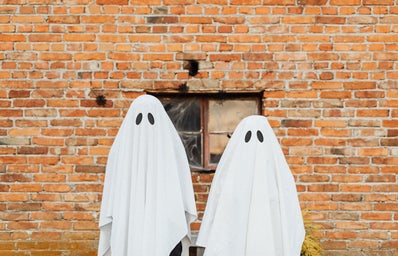With just two left until Halloween (hopefully you’re not scrambling for a last minute costume), the holiday spirit is coming to St Andrews in full force – 99p pumpkins at Tesco, bagged American trick-or-treating candy at discounted prices available in bins outside Morrisons, shoddy decorations put up by fine establishments attempting to cater to students’ excuse to party on the 31st of this month — what more could you ask for?
Well, how about a few ghost stories from St Andrews itself?
It’s hard to forget about the burning of Patrick Hamilton — the Protestant reformer that was burnt alive in 1582, and the “PH” that marks the spot of his execution outside St Salvator’s Quad (and of course the bad luck you get if you step on it). But what about some others? After a deep Google dive, I found that there have actually been quite a few books written on the surprisingly numerous ghostly friends of St Andrews. Not having had the time to read (or the funds to buy) them, I read blog posts, initially. However, after realizing that one of the books was now in the public domain, and free on Google Books and Wikipedia, I immediately turned to reading a few chapters myself. St Andrews Ghost Stories by William Linskill, published in 1921, is a delirious laugh of a book — referencing places and people of St Andrews too far removed from 2021 to be well known. I nevertheless felt educated and intrigued by the collection of stories; this book was the first (as far as I could tell) of a few books published on the topic. If you’re interested in more up to date ghost books on St Andrews, just do a quick google search and you’re sure to find plenty. However if you just want a laugh on a cold and surely rainy St Andrews evening, pull out your laptop, and let Linskill entertain you.
Now, onto some notably scary-good stories:
Tom Morris is the benevolent spirit of a 24-year-old four-time golf Open champion that died of a heart attack in 1875 on the way to see his wife in labor, and is said to haunt The Old Course Hotel. Helping people find lost balls, appearing and disappearing randomly, Mr. Morris would probably enjoy a good night out at the pub with the Golf Society. Round of table golf, anyone?
A less happy-go-lucky kind of spirit is that of the ambiguous heart-broken girl who disfigured herself so she would never have a man be attracted to her again, so she wouldn’t suffer the pains of heartbreak. After this she was taken in by a nunnery (insert Hamlet’s “Get thee to a nunnery” spiel), but ultimately died of her mutilation. She supposedly haunts a short stretch of the walk towards St. Leonards and people are shocked and horrified when she lifts her veil to those lucky enough to see her.
Another tragic tale is that of a man named Nevillie Beuchamp, whose fast and wild ways led to the death of his wife, her heart broken over his unruliness and infidelity. Regretting his decisions, Nevillie became a monk at the Greyfriars monastery in St Andrews, but his wife’s brother, seeking to avenge her death, tracked down the newly converted monk and cut off his head with a sword. Supposedly, the head flew up and out of the church and was never to be recovered again, but would go on to haunt living relatives of the Beauchamp line. Our old friend William Linskill was regaled with this bloody saga by the very last of the Beachamp bloodline, Allan Beauchamp, who claimed to have been followed by the head ever since a chance encounter in the chapel.
The last tale in the novel takes place in a beautiful old home in St Andrews. A woman is asked to take care of another woman who suffers from crippling anxiety. When she arrives at the house, she hears stories of flying silverware and beds being unmade without anyone touching them, and she begins to hear loud thumping screams and ghastly groans. Sometimes the servants lock themselves in their rooms upon the order of the head of the house to keep from ghostly disturbances, though this doesn’t always work. The storyteller claims that while she was taking care of the nervous old woman, she was met by several spirits, the most notable of which was a monk who not only told her how to get rid of the spirits within the home, but also insisted she tell the man who writes ghost stories about all of this… suspicious? Yes. Still fun? Always.
While St Andrews may be the home of golf and beautiful beaches, not to mention our lovely institution, it is also apparently home to much more: a hotspot for ghosts, apparitions, black cats — and the benevolent, malevolent, and everywhere-in-between spirits seem to take to the streets of our quirky little town and add to the feel of antiquity. So, while you are out and about this Halloween, see if your hair stands straight on end, or if you feel a cold shiver down your spine, for you might be about to encounter a happy haunt of our spooky town.
The collection of stories presented within this article are thanks to the hard work and publication of William Linskill. Additionally, David Mclean’s “Five Notorious Ghosts of St Andrews” article in The Scotsman published October 30th of 2017 was a huge help in the starting foundation of this article.


